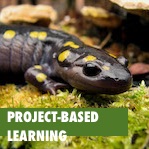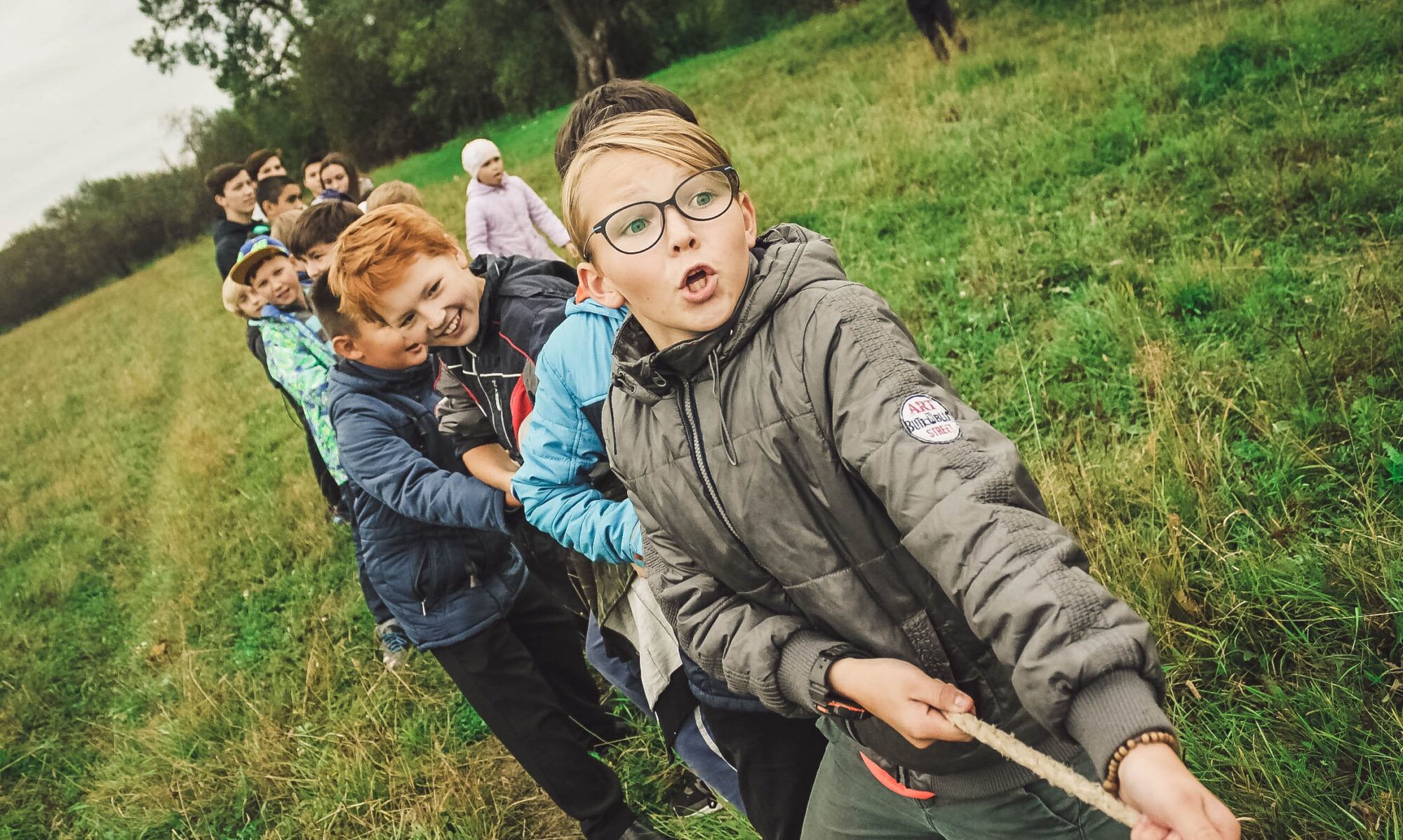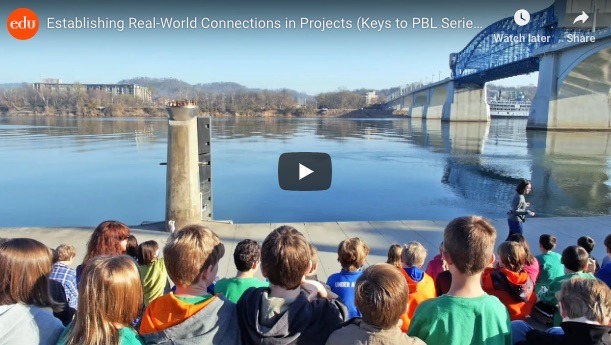Adapting big science for a middle school classroom
 One of the keys of the Project-Based Learning approach is to engage students in solving real-world problems. Ideally, students are involved in exploring relevant and authentic challenges in their community, state, nation, or world. Sometimes teachers and students have to search hard for a need or an opportunity.
One of the keys of the Project-Based Learning approach is to engage students in solving real-world problems. Ideally, students are involved in exploring relevant and authentic challenges in their community, state, nation, or world. Sometimes teachers and students have to search hard for a need or an opportunity.
But other times it falls into our laps.
What does high-level project-based learning look like?
While I was getting coffee last Friday, a headline on the newspaper attracted my attention like a laser beam. The front page reported on an innovative new course being offered by Bennington College in the spring. As the result of a $90,000 National Science Foundation Rapid Response grant, the college will be able to offer a course that provides needed scientific research, engages young people to investigate a real-world problem, and enlists students to give important education and information to lawmakers and the local community. Brilliant.
The class, Understanding PFOA in Our Water, is open to 20 students, as well as faculty and staff. Its mission is to investigate the pressing concerns of water contamination in North Bennington and neighboring Hoosick, NY by the common man-made chemical PFOA, which has been linked to cause cancer.
Recent well samples and test results have the community asking serious questions and urging the state to take action about the potentially dangerous chemical’s contamination of local water sources. This cross-discipline course combines the relevant and authentic problem-solving task with scientific inquiry and communication outcomes.
It’s Project-Based Learning at its best.
What makes project-based learning useful for young adolescents?
One of the keys of the Project-Based Learning approach (PBL) is to engage students in solving real-world problems. Ideally, students are involved in exploring relevant and authentic challenges in their community, state, nation, or world. Sometimes teachers and students have to search hard for a need or an opportunity. Other times it falls into our laps.
Check out this video from Edutopia to learn more about establishing real world connections with PBL:

I love how the Edutopia video gives the example of students investigating what’s in their water and how did it get there — the very challenge facing this part of our state and New York. A truly real problem at the moment!
This course at Bennington College is not only getting students to engage in real-world problem solving and think beyond the classroom walls, but it’s likely that this learning environment is more effective, too. Studies show that in a PBL environment, students experience gains in factual knowledge that are equivalent to or superior to the gains in factual learning in a traditional environment.
What would it look like in a middle school classroom?
My excitement over this course potential brings so many questions to mind:
- How can public schools conduct similar work?
- Is grant funding required to make this happen?
- Do middle schoolers have the skills and intellect to tackle similar issues?
- What’s holding our middle schools back from doing similar coursework?
- Funding?
- Transportation?
- Scheduling constraints?
- Administrative support?
- Curriculum outlines?
I’m serious. What is holding us back?
3 Ways to Make PBL Work in a Middle School Classroom
1. Use your networking skills
If you’re in the Bennington area, contact the college and ask for your school or class to be involved in the process. Bring your class to the school while they test water samples, or go with them on a stream site visit. Ask for the college to allow your students to become collaborators; they may love the idea.
Or better yet, have the students themselves draft the request to the college, using the experience to go over crafting a collaboration request, researching the appropriate contact, the hallmarks of professional contact language. Bring multimedia to the table: if you have student filmmakers, have them grab an iPad and script, shoot and edit a quick supporting video, explaining to Bennington’s scientists the situation at your school students are interested in investigating.
2. Go virtual
Networking may not happen. You may not have the transportation, or the timing may be off. Look for possible ways to connect virtually with the project. Classrooms are finding useful ways to use Facetime, Skype, and Google Hangouts with experts and professionals around the globe. Students could learn about the chemical contamination through a virtual meeting with scientists at the EPA or the Environmental Working Group.
And don’t just limit yourself to Bennington; part of learning about collaboration is having a backup plan. Broaden student research into water quality specialists to other universities around the country and the world; look into water remediation companies and see if they’d be willing to videoconference in and talk about the research they’re looking for in making judgments about projects.
Get in touch with NOAA or USGS — both outfits have water quality specialists who do outreach, and you may have a local field office nearby that could entertain a real-life student visit, or be willing to send someone out to stare obsessively at your salamanders. There are so many scientists who go to school for eons just to do this sort of thing.
3. DIY on a Small Scale
It’s also possible to create mini-learning opportunities within the scope of the project.
A teacher could go out and get water samples on their own and bring them back to the classroom. A drinking water test kit will not quite test for PFOA, but it would provide students with interesting data on common contaminants.
Students can follow the news and blog feeds for updated information; they can attend community forums and informational meetings. The class can continue to investigate the problem, search for answers, and inform and recommend an audience.
Then feed your mini-project results into the next round of asks — heck, do the DIY first so you and your students can bring data to the table as you ask scientists to get involved. The only thing scientists like better than staring at salamanders is a data-based feeding frenzy.
As the great Wayne Gretzky once famously said, “100 percent of shots not taken don’t go in.”
Encourage your middle grades students to line up in the crease and take the shot for real-world project-based learning.
Tiger salamander image (ambystoma tigrinum) licensed from Kuribo CC BY-SA 3.0



Real-world problems and project-based learning by @VTEducares #vted https://t.co/wleydcbKfn
RT @innovativeEd: Real-world problems and project-based learning by @VTEducares #vted https://t.co/wleydcbKfn
RT @innovativeEd: Real-world problems and project-based learning by @VTEducares #vted https://t.co/wleydcbKfn
Real-world problems and project-based learning https://t.co/hFA99c1grr
Real-world problems and project-based learning https://t.co/ycCoa4FycF via @innovativeEd
Real-world problems and project-based learning: Making it work with networking, technology, and a DIY ethos https://t.co/yV7qq3LUeX
Real-world problems and project-based learning https://t.co/sKNt3BdTNT
RT @pennybishop: Real-world problems and project-based learning https://t.co/sKNt3BdTNT
#FACEandS #ITT – Real-world problems and project-based learning https://t.co/977mNAydqz